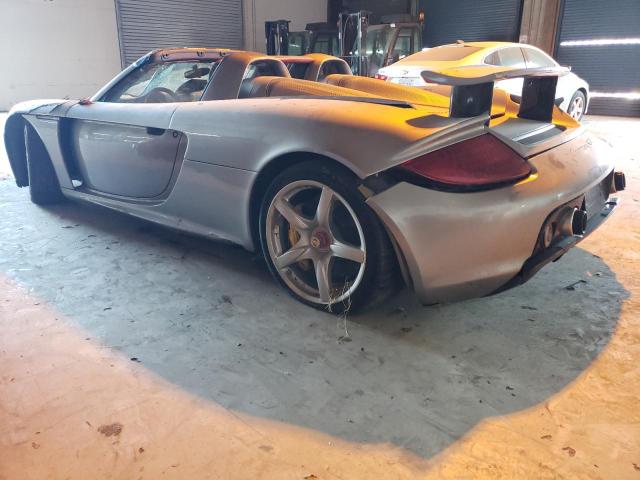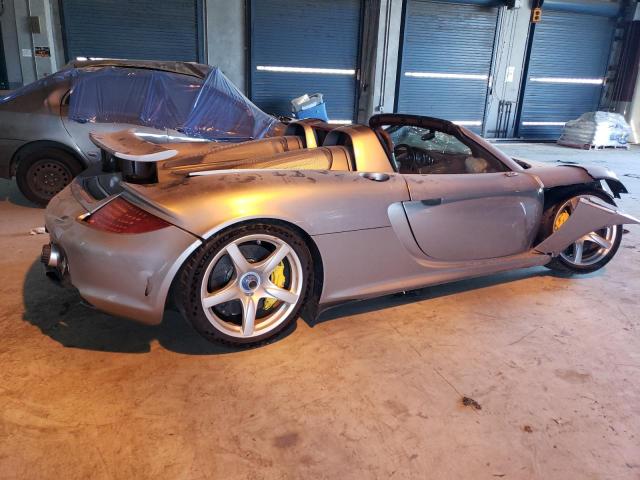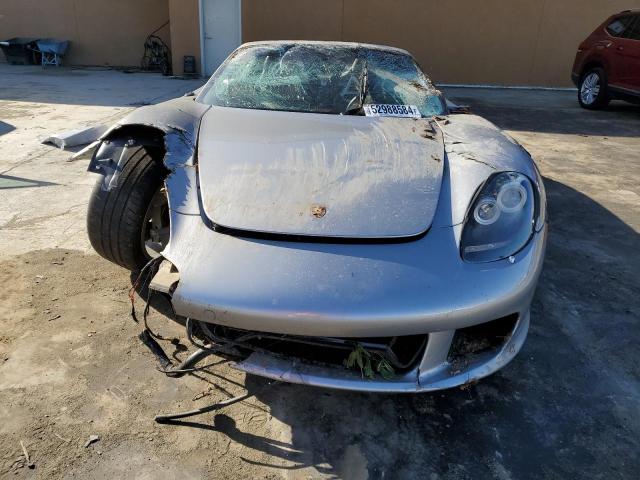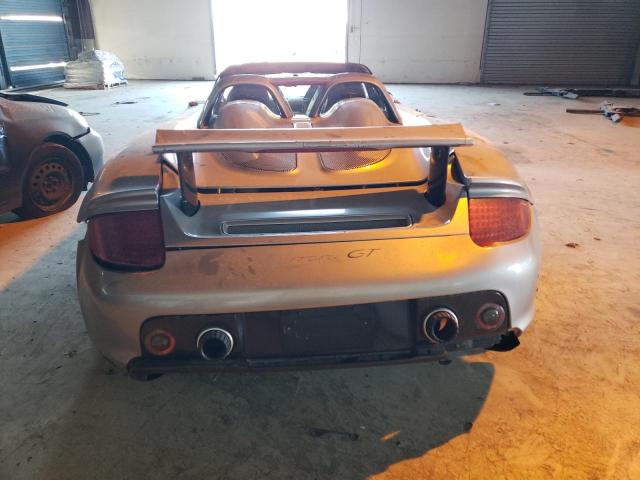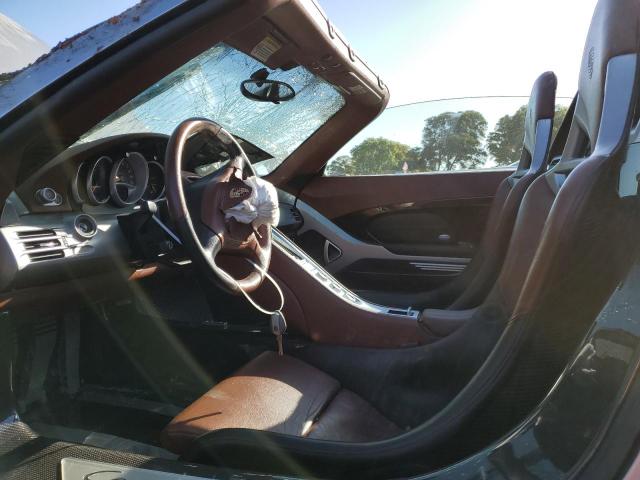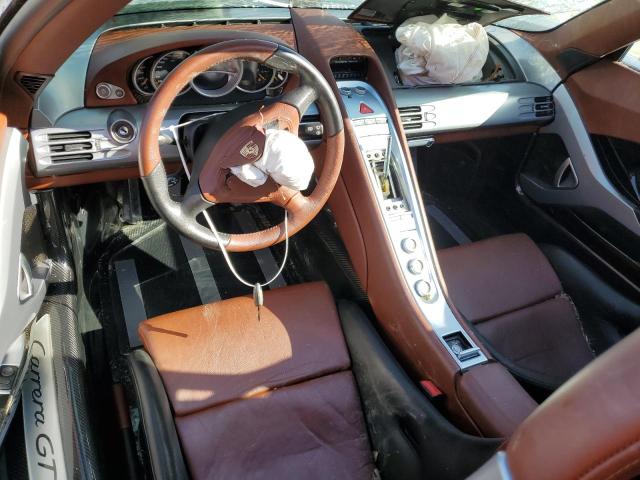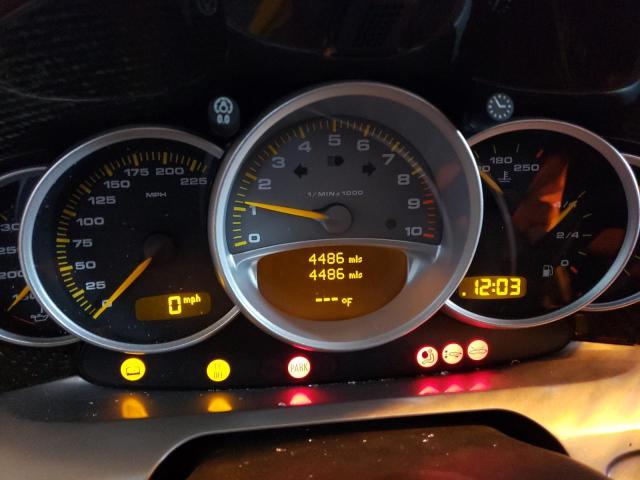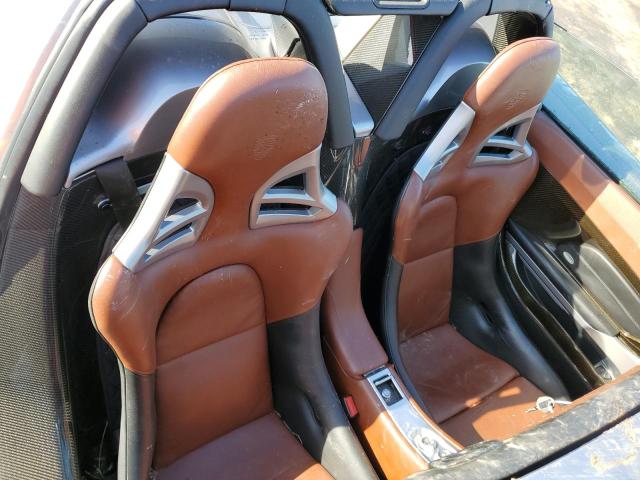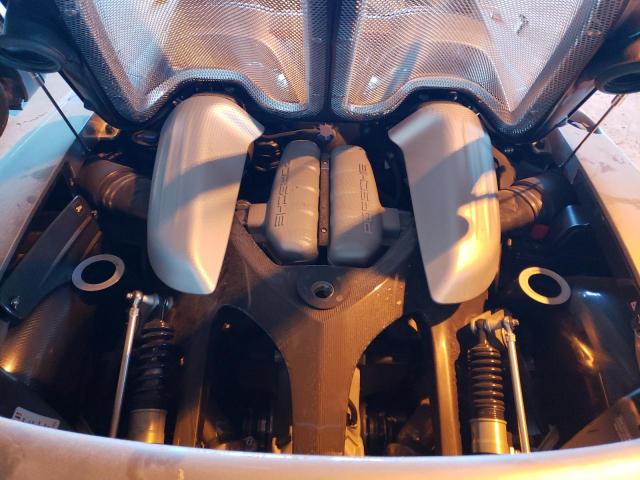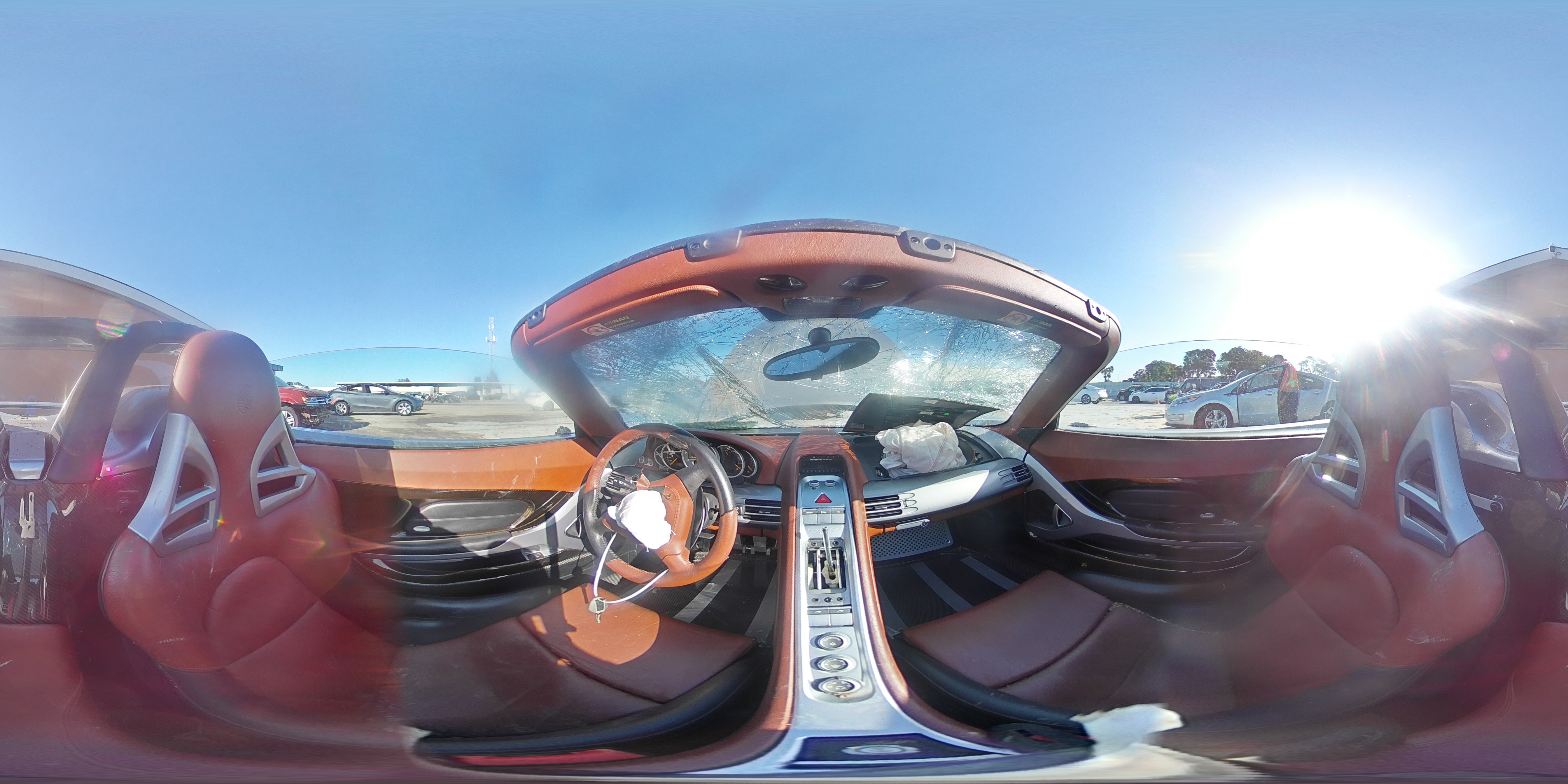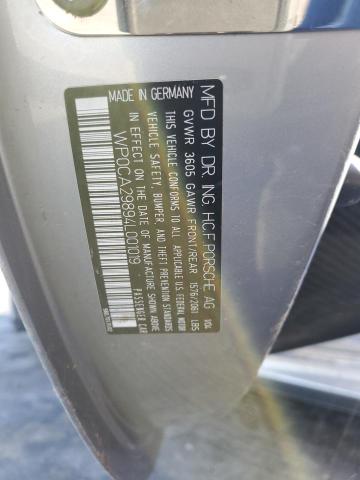2004 PORSCHE 911 | WP0CA29894L001019
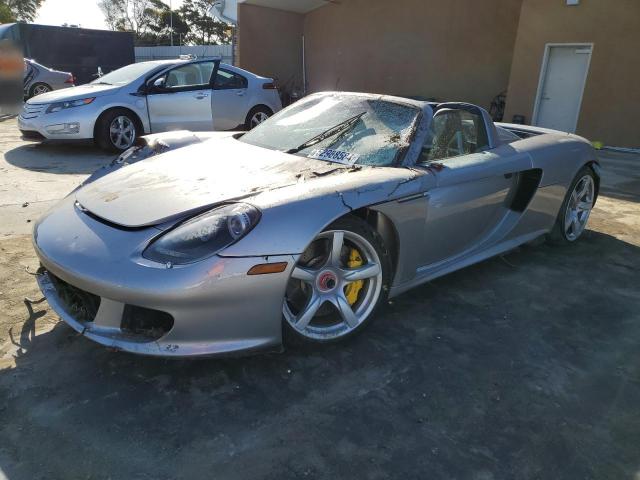 ❯
❯Lot details
- Sale Date2025-01-02
- Lot Number52988584
- ACV1951930 $
- Sale documentCA - SALVAGE CERTIFICATE
- LocationCA - HAYWARD
- Odometer4,486 miles (7,219 km)
- Primary DamageALL OVER
- SellerGEICO
Vehicle details
- Make
- Model
- Year2004
- FuelGAS
- Engine5.7L 10
- TransmissionsMANUAL
- Drive TypeRear-wheel drive
Vehicle specifications
1
~$450,000
Engine: 5.7L naturally aspirated V10 petrol
Torque: 590 Nm
0–100 km/h: ~3.9 s
The Porsche Carrera GT is powered by a 5.7-liter naturally aspirated V10 engine, delivering 612 horsepower and 590 Nm of torque. This powertrain enables the Carrera GT to accelerate from 0 to 100 km/h in just 3.9 seconds, showcasing its impressive performance capabilities. The engine's high-revving nature and immediate throttle response contribute to an exhilarating driving experience, characteristic of Porsche's performance ethos.
Handling is a standout feature of the Carrera GT, thanks to its lightweight carbon fiber monocoque chassis and finely tuned suspension. The car's low center of gravity, coupled with precise steering feedback, allows for exceptional agility and cornering capabilities. The aerodynamic bodywork, including a prominent rear wing and underbody diffusers, enhances downforce, ensuring stability at high speeds and during aggressive maneuvers.
The Carrera GT embodies Porsche's commitment to pure driving pleasure. Its minimalist design and focus on performance over luxury make it a driver's car in the truest sense. Compared to contemporaries like the Ferrari Enzo or Mercedes-Benz SLR McLaren, the Carrera GT offers a more raw and unfiltered connection to the road, appealing to enthusiasts seeking an uncompromised sports car experience.
Final Bid Porsche Carrera GT (2004)
$561,000
$561,000
$561,000
Body Styles
The Porsche Carrera GT is a two-door, two-seat roadster that emphasizes aerodynamic efficiency and lightweight construction. Its compact dimensions, with a length of approximately 4,613 mm, width of 1,921 mm, and height of 1,166 mm, contribute to its agile handling characteristics. The removable roof panels offer an open-air driving experience, while the integrated rear wing and aggressive front splitter not only enhance its visual appeal but also serve functional purposes by increasing downforce and stability. The body panels are crafted from carbon fiber-reinforced plastic, further reducing weight and enhancing performance.
Model Name Meaning (Manufacturer)
The name "Carrera" is derived from the Carrera Panamericana, a famous Mexican road race in which Porsche achieved significant success. "GT" stands for "Gran Turismo," indicating the car's grand touring capabilities. Together, "Carrera GT" reflects Porsche's racing heritage and the vehicle's high-performance nature.
Model Name Meaning (Languages)
Beyond its direct translation, "Carrera" conveys a sense of speed and competition, aligning with the car's focused driving dynamics. The name suggests a vehicle that requires and rewards driver engagement, embodying the essence of a track-oriented sports car.
Body & Interior Colors and Rims
The Porsche Carrera GT (2003–2006) was one of the most visually captivating hypercars of its era, and its exterior and interior choices reflected a precise balance between race-bred minimalism and timeless sophistication. From the factory, most Carrera GTs were delivered in a restrained yet evocative palette that included GT Silver Metallic (by far the most common), Seal Grey, Basalt Black, and Fayence Yellow — a daring shade that referenced historic Porsche race cars. Less frequently seen but factory-correct colors included Guards Red, Zanzibar Red, and Speed Yellow, with rare Paint to Sample (PTS) finishes offered toward the end of production. Only 1,270 units were built worldwide, making any color outside GT Silver a point of rarity and prestige.
The body, crafted almost entirely from carbon fiber-reinforced plastic (CFRP), had a deep, glassy finish regardless of shade — emphasizing its advanced construction and F1-inspired aerodynamics. The car’s integrated flying buttresses, manual carbon-fiber rear wing, and removable roof panels (which could be stored in the front trunk) gave it a sculptural silhouette that played perfectly with shadow and light, especially under satin or metallic paint finishes.
Inside, the Carrera GT’s cabin was a study in analog performance and Porsche craftsmanship, available only in select color themes, with a strong focus on driver involvement. Most models featured Ascot Brown leather, a rich and supple shade applied not just to seats but also to the dash, console, door panels, and even the luggage set that accompanied the car. Other leather options included Dark Grey, Black, and rare Terracotta, with buyers occasionally requesting two-tone leather or custom Porsche Exclusive treatments. All interiors were hand-finished, with tightly stitched seams, minimalist switchgear, and carbon composite seat shells wrapped in leather or Alcantara.
Signature cabin details included the birchwood gear knob, a nod to the Porsche 917 race car, and the exposed carbon fiber monocoque tub visible in the sills and behind the seats. Trim finishes included brushed aluminum, matte carbon, and soft-touch plastics, but all were secondary to the seat ergonomics and the stunning, sculpted dashboard design that curved toward the driver like a bespoke cockpit.
The Carrera GT rode on five-spoke forged magnesium wheels designed for minimal rotational mass and maximum strength. These center-locking wheels measured 19 inches at the front and 20 inches at the rear, and came in finishes such as Silver, Satin Titanium, or optional polished variants. Wheel hubs featured color-coded center-lock nuts — blue on the left, red on the right — a motorsport-derived safety detail. The wheels were wrapped in specially developed Michelin Pilot Sport PS2 tires, the first street-legal tires capable of managing the car’s extreme performance envelope at launch.
Behind the wheels sat carbon-ceramic brakes (PCCB) — a Porsche first for a production road car — with yellow-painted 6-piston calipers and massive cross-drilled rotors, ensuring fade-free braking even under the Carrera GT’s staggering top speed. The car’s ride height, wheel camber, and stance all reflected its race-derived DNA — visually low, wide, and tense, with the wheels tucked neatly under the muscular arches, giving the car a predator-like posture even at rest.
Top Expensive Options
- Carbon Fiber Interior Package: $15,000
- Custom Exterior Paint Finish: $10,000
- Lightweight Racing Seats: $8,000
- High-Performance Brake Kit: $6,500
- Upgraded Exhaust System: $5,000
- Alcantara Interior Trim: $4,500
- Forged Alloy Wheels: $4,000
- Air Conditioning System: $3,500
- Premium Audio System: $3,000
- Custom Leather Upholstery: $2,500
vs Competitors
In the supercar segment, the Porsche Carrera GT stands out for its uncompromising focus on performance and driver engagement. While competitors like the Ferrari Enzo and Mercedes-Benz SLR McLaren offer a blend of comfort and performance, the Carrera GT prioritizes lightweight construction and track-ready dynamics. Its minimalist interior and absence of unnecessary luxury features underscore its dedication to pure driving pleasure. The Carrera GT's exceptional handling, responsive steering, and aerodynamic design provide a more visceral and connected driving experience compared to its contemporaries, appealing to enthusiasts seeking a no-frills, high-performance vehicle.
Fun Fact
Only 1,270 units of the Porsche Carrera GT were produced between 2003 and 2006, making it a rare and highly sought-after model among collectors and enthusiasts. Its limited production run, combined with its distinctive design and performance capabilities, has cemented its status as a modern classic in the sports car world.



